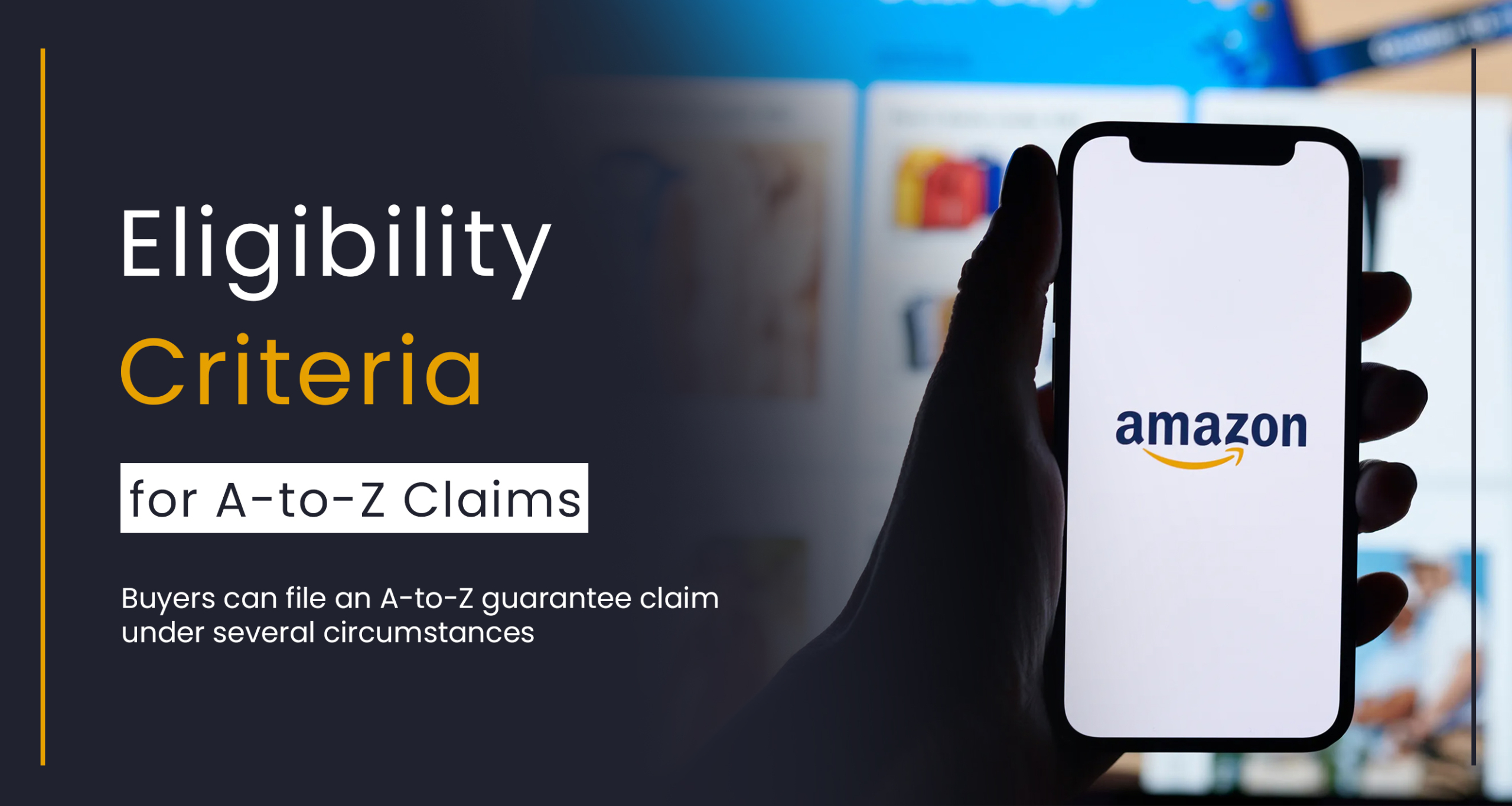
Understanding the Amazon A-to-Z Guarantee

Eligibility Criteria for A-to-Z Claims
Buyers can file an A-to-Z guarantee claim under several circumstances:
- Item Not Received: If the buyer doesn’t receive the purchased item within the expected timeframe.
- Late Delivery: When the item arrives after the maximum estimated delivery date.
- Item Quality Issues: If the item received is defective, damaged, or significantly differs from the seller’s description.
- Refund Issues: In cases where the seller fails to issue a refund after the buyer returns the item.
- Payment Disputes: If the buyer believes they were charged an amount exceeding the agreed purchase price.
How Sellers Can Avoid A-to-Z Claims
To minimize the risk of A-to-Z claims, sellers should adhere to Amazon Payments Customer Service Policy. Key practices include prompt shipment, clear communication with buyers, and honoring return policies. These proactive steps not only prevent claims but also enhance the overall shopping experience, fostering positive seller ratings and reviews.
Managing A-to-Z Claims Effectively
It is the sellers’ duty to react as soon as a claim is made. Amazon emails vendors to let them know about the situation and gives them a chance to explain themselves. Sellers have access to the A-to-Z Claims page on Seller Central, where they may monitor claim specifics and upload required files, like shipment confirmations or correspondence between the seller and the buyer.
Impact of A-to-Z Claims on Seller Accounts
A seller’s Order Defect Rate (ODR), a statistic that affects account health and performance indicators, can be negatively impacted by excessive A-to-Z claims. Warnings, account suspensions, or even account terminations could result from high ODR. Therefore, minimizing these risks and upholding the status of a strong seller account can be achieved by quickly resolving disputes and providing reimbursements.
Handling Chargebacks and A-to-Z Claims
Amazon has policies in place to stop customers from submitting chargebacks and A-to-Z guarantee claims at the same time. Amazon usually represents the chargeback to the issuing bank if it is started after an A-to-Z claim is approved, guaranteeing a just outcome for all parties.
Appeals Process for A-to-Z Claims
In the event that a claim decision is rendered against the seller, Seller Central offers a 30-day appeal opportunity. Sellers may be required to furnish further transaction details in order to bolster their appeal throughout this procedure. If an appeal is successful, accounts are credited, giving sellers the opportunity to correct disputed transactions.

Best Practices to Navigate the Amazon A-to-Z Guarantee
Importance of Proactive Communication
Clear communication is essential to preventing misinterpretations that could result in A-to-Z claims. Clear product descriptions, shipping estimates, and shipment alerts should all be provided by sellers. Answering questions and concerns from customers as soon as possible can prevent problems before they become claims.
Transparency in Return Policies
- Example of a Bullet Point:
- Clearly state return policies on product pages and invoices.
- Include return instructions in shipment packages.
Leveraging Seller Central Tools
Utilizing Seller Central tools effectively empowers sellers to manage A-to-Z claims proactively. Sellers can monitor claim statuses, respond promptly to notifications, and submit necessary documentation through the platform. This centralized approach streamlines claim resolution and ensures compliance with Amazon’s policies.
Mitigating Risks with Quality Control
Maintaining stringent quality control measures mitigates the risk of defective or misrepresented products, a common cause for A-to-Z claims. Sellers should conduct thorough product inspections before shipment and provide accurate descriptions and images to avoid buyer dissatisfaction.
- Example of a Bullet Point:
- Implement quality assurance checks throughout the fulfillment process.
- Include high-resolution images and detailed product descriptions.
Reviewing Performance Metrics Regularly
Regularly monitoring performance metrics, including Order Defect Rate (ODR), helps sellers gauge their adherence to Amazon’s standards. By identifying areas of improvement and addressing issues promptly, sellers can maintain a favorable ODR and minimize the impact of A-to-Z claims on their seller accounts.
Educating Customer Service Teams
Customer support representatives can efficiently manage buyer inquiries by being trained on Amazon’s A-to-Z Guarantee rules. Empathy, problem-solving abilities, and following Amazon’s policies should be prioritized in training while handling customer issues or possible claims.
Building Long-Term Buyer Relationships
Putting money into long-term connections with buyers increases customer loyalty and lowers the possibility of A-to-Z claims. Customizing messaging, providing outstanding customer support, and asking for feedback are ways to increase client satisfaction and promote recurring business.
Continuous Improvement and Adaptation
Sellers should adopt an attitude of constant improvement by asking for input, examining claim patterns, and modifying their tactics as necessary. Resilience and competitiveness of sellers on Amazon’s platform are increased by being proactive and sensitive to the dynamics of the marketplace.
Conclusion
Frequently Asked Questions (FAQs)
Under the provisions of the Amazon A-to-Z Guarantee, a customer protection scheme, customers who have issues with purchases made using Amazon Payments are assured of receiving a full refund or compensation. Purchasing from independent vendors on Amazon’s marketplace is the major topic of this.
Customers are entitled to file an A-to-Z claim if an item is misplaced during shipping, comes broken or defective, is delivered late, or if there are issues with payment or refunds for returned goods. This guarantee instills confidence in customers’ purchases by offering mechanisms for resolving disputes.
When sellers learn of a claim, they have an obligation to furnish all necessary documentation, such as shipment documents, communication, and transaction data. If you fail to respond within the specified timeframe, the buyer can be declared the winner of the dispute.
Sellers can minimize A-to-Z claims by adhering to best practices, which include unambiguous communication, flexible return policies, superior product listings, and prompt issue closure. By anticipating and managing consumers’ expectations and promptly addressing their grievances, conflicts can be prevented.
An Amazon seller’s Order Defect Rate (ODR), a critical performance metric, may suffer by having an overwhelming amount of A-to-Z claims. Excessive ODR may lead to account warnings, suspensions, or terminations, underscoring the importance of effective claims handling.

